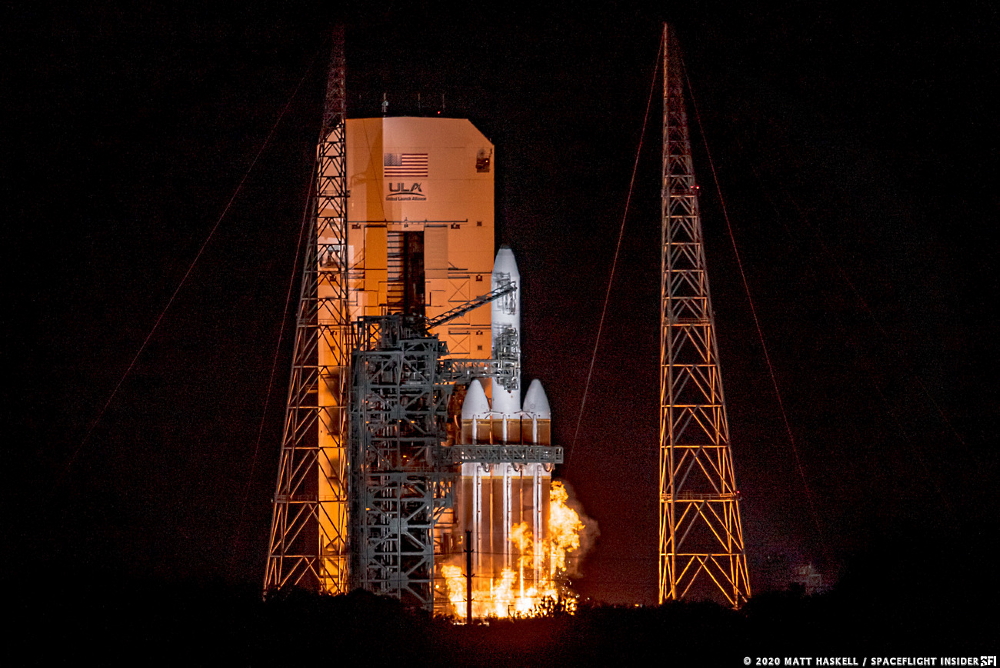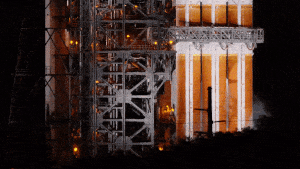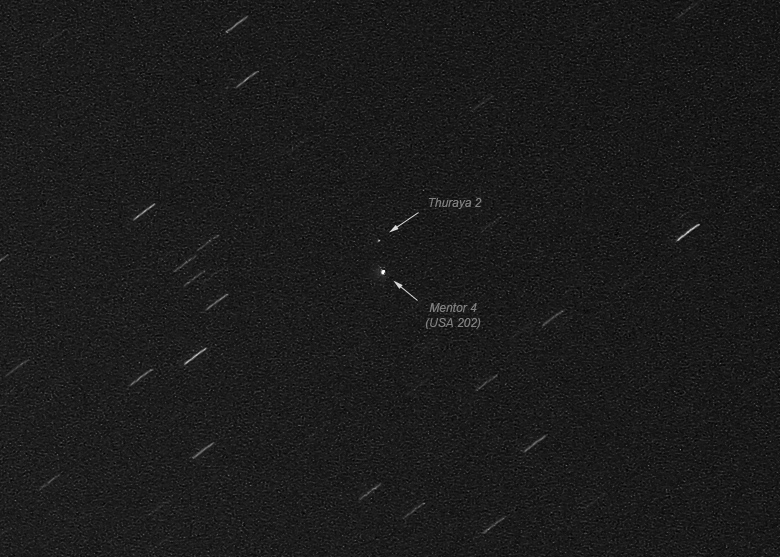
Photo Matt Haskell / Spaceflight Insider
Night failure
The launch of the Delta IV Heavy modification with the NROL-44 military satellite was supposed to take place on the night of Saturday 29 August. This was already the third attempt - the start on August 26 was canceled at the request of the customer, and on August 27 a problem with pneumatics on ground equipment was discovered. Already on August 29, the launch was postponed from 2:08 EDT to an hour and a half due to the abnormal temperature of one of the rocket compartments, since the launch window was very wide. The new start time was set at 3:28 EDT (7:28 GMT, 9:28 MSK). The booster rocket safely walked along the launch cyclogram, in -15 seconds the ROFI units inherited from the space shuttles and throwing out beautiful streams of sparks (they are used not to ignite the engines, but to ignite the hydrogen coming out of them so that it does not accumulate) started to open, the feed valves began to open components of the fuel, and the rocket is enveloped in flames.The commentator used to say “three, two, one, start”. But the rocket did not break away from the launch pad, and the flame below quickly extinguished.

GIF from the broadcast of the start It
soon became clear that the automation stopped the cyclogram three seconds before the start. Starting at -10 seconds, the process is commanded by the Terminal Countdown Sequencer, which traverses the data from a huge number of sensors and checks the conditions that allow or deny start. According to SpaceFlight Insider, the controller considered that the conditions for starting the engine of the central unit were unacceptable. And the answeron Twitter, Tori Bruno, the head of ULA's rocket manufacturing facility, said it was caused by a problem with ground equipment. Combining both sources, we find that the launch of the Delta IV Heavy launch vehicle with the NROL-44 satellite was stopped three seconds before the launch due to information from ground equipment about unacceptable conditions for starting the central engine.
In the Heavy modification, since 2013, in order to reduce burning, the rocket began to turn on the first engine of one of the side blocks, so that the broadcast shows how the rising flame is carried down by its thrust. And after turning off the engines, the disappearance of thrust leads to the fact that small tongues of flame rise in the lower part of the rocket. But they quickly go out by themselves, and the improved, again to reduce burning, the thermal insulation of the blocks remains without damage noticeable by the broadcast. Replacement of disposable components like ROFI and additional checks will take at least a week, and a date for a new attempt has not yet been announced. The rocket and the payload were not damaged, so we can admire with a clear conscience the beautiful shots of tongues of flame rising into slo-mo.

GIF from Cosmic Perspective video
Also, speaking of beauty, it's worth noting that ULA put on a whole projection show just before launch.
And a little about the payload

Delta IV Heavy on a transport and installation unit, photo ULA
The NROL-44 satellite is a military one and therefore is secret, one can only guess about its orbit, type and purpose. The crash areas of spent stages are known from published NOTAM and NOTMAR warnings. For NROL-44, this is the eastern Atlantic Ocean. Consequently, the satellite is almost certainly sent to geostationary orbit. The Nasaspaceflight.com website suggeststhat NROL-44 is a radio intelligence satellite that will eavesdrop on telemetry and data from satellites of other countries located in geostationary orbit. It is assumed that similar Magnum vehicles were launched by the United States on shuttles in 1985 and 1988. And the NROL-44 belongs to the Orion / Mentor type, which were displayed on the Titans-IV in 1995, 1998 and 2003, as well as on the Delta IV Heavy in 2009, 2010. 2012 and 2016. Perhaps the NROL-44 will receive the designation USA-309 and replace the USA-202, which has been operating for eleven years.

USA-202 eavesdrops on the UAE's Thuraya satellite telephone network, photo by Marcoaliaslama / Wikimedia Commons